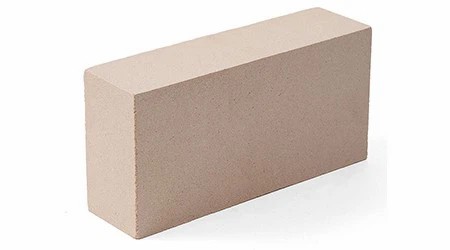PRODUCTS
Insulation Magensia Brick
The manufacturing process of insulation magnesia bricks is as follows: A. Raw material preparation: Carefully select high-purity magnesium oxide and grind it to the required particle size. Add lightweight aggregates such as expanded perlite or vermiculite to create the lightweight character of the brick. Various additives are mixed to enhance the plasticity and workability of the mixture. B. Shaping: The prepared mixture is shaped into brick form using various methods, including extrusion, pressing, or casting, depending on the intended use and the manufacturers technology. C. Drying: The forme
Composition: Premium materials such as high alumina oxide, magnesium oxide, and silicon carbide, with customizable composition based on client requirements.
Form: Available in powder, brick, board, and castable forms to suit various application needs.
Refractoriness: Standard range from 1200°C to 1800°C, with options for higher temperature customization.
Application Fields: Widely used in industries such as steel, cement, glass, and petrochemicals for furnace lining and insulation.
Packaging: Options include 25 kg bags, bulk bags, and custom packaging solutions compliant with global transportation standards.
Introduction
Our experienced R&D team can customize the material, form, and size according to your specific application needs while ensuring compliance with international quality standards. With rigorous quality control and advanced production facilities, we guarantee products with high refractoriness, excellent compressive strength, and long-lasting durability. Whether you are in the steel, cement, glass, or petrochemical industry, we are your trusted partner, supporting the success of your projects.
For customization inquiries, please feel free to contact us. We will provide tailor-made solutions based on your requirements.
Insulation Magensia Brick Details
The manufacturing process of insulation magnesia bricks is as follows:
A. Raw material preparation: Carefully select high-purity magnesium oxide and grind it to the required particle size. Add lightweight aggregates such as expanded perlite or vermiculite to create the lightweight character of the brick. Various additives are mixed to enhance the plasticity and workability of the mixture.
B. Shaping: The prepared mixture is shaped into brick form using various methods, including extrusion, pressing, or casting, depending on the intended use and the manufacturer's technology.
C. Drying: The formed bricks are dried in a controlled environment to remove excess moisture.
D. Firing: The dried bricks are fired in a high-temperature kiln, often at temperatures in excess of 1,000°C (1,832°F).
E. Inspection and Quality Control: After firing, the bricks undergo rigorous quality control inspections to ensure they meet required specifications and performance standards.
Features
1.High Thermal Insulation: Due to their low thermal conductivity and the presence of lightweight aggregates, these bricks can effectively minimize heat transfer, keeping the surrounding environment at a relatively lower temperature.
2. Lightweight and Low Density: The use of lightweight aggregates in their composition results in low-density bricks.
3.Resistance to Thermal Shock: Insulation magnesia bricks possess a certain degree of resistance to thermal shock, allowing them to endure rapid and severe temperature fluctuations without cracking or spalling.
Application
Insulation magnesia bricks are used in high-temperature processes and industries where insulation is crucial as follows:
A. Furnaces: These bricks are widely used in the construction of various industrial kilns including rotary kilns, blast furnaces, induction furnaces, etc.
B. Kilns: In the production of ceramics, cement and lime, kilns are an integral part of the manufacturing process. These kilns typically use insulated magnesia bricks to ensure effective insulation and minimize energy consumption.
C. Incinerators: Waste incinerators and industrial waste treatment facilities utilize insulated magnesia bricks to withstand the extreme temperatures and thermal stresses generated during the incineration process.
D. Foundries: The foundry industry relies on these bricks in cupolas and other melting equipment, which facilitate efficient, uniform metal melting.
E. Glass industry: Glass manufacturing requires precise temperature control. Insulating magnesia bricks are favored by glass melting furnaces because of their low iron content and excellent thermal insulation properties.
F. Petrochemical Industry: In applications such as fluid catalytic cracking units and other high-temperature reactors, these bricks are critical to maintaining process temperatures and extending equipment life.













